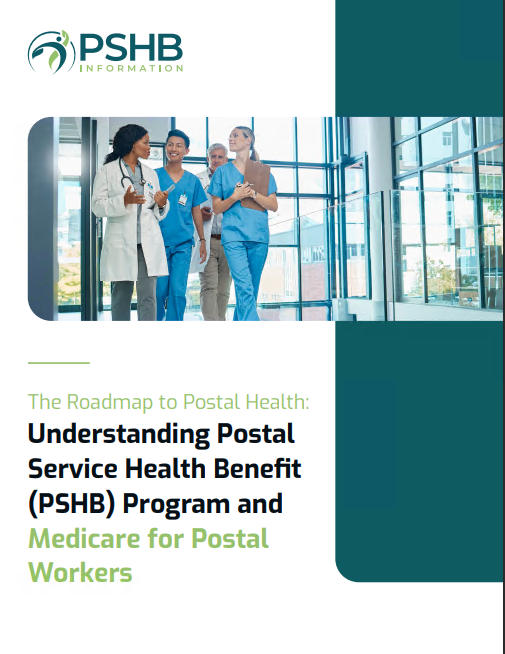Key Takeaways
-
Your healthcare choices matter. The decision between Medicare Advantage and Original Medicare under the Postal Service Health Benefits (PSHB) program affects your coverage, costs, and access to providers. Understanding the trade-offs is key to making an informed choice.
-
PSHB brings changes. Starting in 2025, USPS retirees must enroll in a PSHB plan, and many will need Medicare Part B. How your plan works alongside Medicare—whether through Original Medicare or Medicare Advantage—determines how much you pay and what benefits you get.
Understanding Your Medicare Options Under PSHB
As a postal retiree, you now have to navigate Medicare with your new Postal Service Health Benefits (PSHB) plan. The big question is: should you stick with Original Medicare, or does Medicare Advantage offer a better deal? While both provide essential healthcare coverage, the way they work, the costs involved, and the benefits you receive can vary significantly.
Your healthcare choices now play an even bigger role in shaping your retirement experience. The PSHB program is designed to coordinate with Medicare, ensuring that postal retirees get the best possible coverage. But choosing between Original Medicare and Medicare Advantage is no small task. It’s important to consider factors such as provider access, costs, benefits, and flexibility to determine what works best for you.
Original Medicare: The Traditional Path
Original Medicare consists of two main parts:
-
Medicare Part A (Hospital Insurance) covers inpatient hospital stays, skilled nursing facilities, hospice care, and some home healthcare.
-
Medicare Part B (Medical Insurance) covers doctor visits, outpatient care, preventive services, and durable medical equipment.
How It Works with PSHB
If you enroll in Original Medicare, your PSHB plan acts as secondary coverage. That means:
-
Medicare pays first, and your PSHB plan picks up some or all of the remaining costs.
-
You typically have a broader choice of doctors and hospitals since Original Medicare is widely accepted.
-
You may still have out-of-pocket costs, including deductibles and coinsurance, but your PSHB plan can help cover these.
-
You have the flexibility to visit any provider that accepts Medicare, without worrying about network restrictions.
Costs to Consider
-
Medicare Part A is usually premium-free if you’ve worked at least 10 years.
-
Medicare Part B requires a monthly premium ($185 in 2025), which most PSHB retirees must pay.
-
You may still have some out-of-pocket expenses for deductibles, copays, and coinsurance, though your PSHB plan helps with these.
-
While there is no cap on out-of-pocket spending with Original Medicare, your PSHB plan can limit your financial exposure.
Medicare Advantage: The All-in-One Alternative
Medicare Advantage (Part C) is an alternative to Original Medicare, offered by private insurance companies. These plans bundle Part A and Part B and often include additional benefits.
How It Works with PSHB
-
If you choose Medicare Advantage, your plan takes over your Medicare coverage, meaning you get healthcare through the plan’s network.
-
Your PSHB plan may still provide secondary coverage, but the way it coordinates benefits can vary.
-
Many Medicare Advantage plans include extra benefits like dental, vision, and hearing coverage that Original Medicare doesn’t offer.
-
You may be required to choose a primary care physician and obtain referrals to see specialists.
Costs to Consider
-
You still pay the Part B premium ($185 in 2025), plus any additional costs required by your Medicare Advantage plan.
-
Out-of-pocket costs like copays and deductibles depend on the plan’s structure.
-
Network restrictions may apply, meaning you might need to see doctors within the plan’s network.
-
Medicare Advantage plans have an annual out-of-pocket maximum, which can help cap healthcare expenses.
Comparing Key Differences
1. Provider Access
-
Original Medicare: Nationwide access to any doctor or hospital that accepts Medicare.
-
Medicare Advantage: Limited to a network of providers, which may include HMOs or PPOs.
2. Cost Structure
-
Original Medicare: You pay deductibles and coinsurance, with PSHB helping cover some costs.
-
Medicare Advantage: Structured copays, deductibles, and an annual out-of-pocket limit.
3. Additional Benefits
-
Original Medicare: Covers essential healthcare but does not include dental, vision, or hearing without separate coverage.
-
Medicare Advantage: Often includes extra benefits beyond basic healthcare.
4. Flexibility
-
Original Medicare: No network restrictions, giving you the freedom to see specialists without referrals.
-
Medicare Advantage: May require referrals or approvals for certain procedures.
5. Prescription Drug Coverage
-
Original Medicare: Requires a separate Medicare Part D plan for prescription drug coverage.
-
Medicare Advantage: Often includes built-in prescription drug coverage (though plan details vary).
6. Emergency Coverage
-
Original Medicare: Covers emergency care nationwide and even in some foreign countries under limited circumstances.
-
Medicare Advantage: Covers emergencies but may have different cost-sharing structures depending on the plan.
Which One Is Right for You?
Your choice between Medicare Advantage and Original Medicare depends on your personal healthcare needs and budget. Ask yourself:
-
Do you prefer nationwide doctor access (Original Medicare) or are you comfortable with network-based care (Medicare Advantage)?
-
How important are extra benefits like dental, vision, and hearing?
-
Are you okay with copays and deductibles, or do you want the flexibility of paying for services as needed?
-
Do you travel frequently and need nationwide provider access?
-
Would you rather have structured out-of-pocket limits to help predict costs?
Timing Your Enrollment Decisions
Starting in 2025, Medicare-eligible postal retirees must enroll in Medicare Part B to maintain PSHB coverage. Here’s what you need to know:
-
If you’re already retired, you may need to enroll in Medicare Part B during the General Enrollment Period (January–March) if you missed your Initial Enrollment Period.
-
If you’re still working, you can enroll in Medicare when you retire without a penalty.
-
Medicare Advantage and Part D (prescription drug coverage) can only be changed during the Annual Enrollment Period (October–December).
-
Once you enroll in a plan, you may be locked in for a year unless you qualify for a Special Enrollment Period.
How PSHB Plans Work with Your Choice
Regardless of which Medicare path you choose, your PSHB plan remains part of your healthcare coverage. Some PSHB plans may:
-
Offer benefits that reduce your Medicare Part B premium (varies by plan).
-
Help cover out-of-pocket costs from Medicare.
-
Provide prescription drug coverage integrated with Medicare Part D.
-
Offer additional wellness programs or telehealth services.
Making the Best Choice for Your Health and Finances
Choosing between Original Medicare and Medicare Advantage is a big decision, but your PSHB plan plays a role in either scenario. Understanding how the plans work together will help you get the most value out of your benefits.
If you still have questions, get in touch with a licensed agent listed on this website to ensure you’re making the best decision for your healthcare needs.









